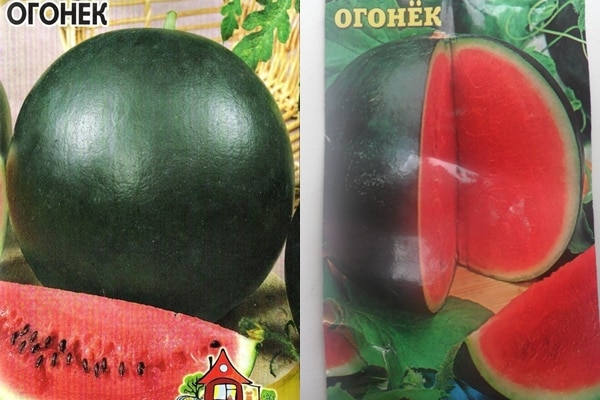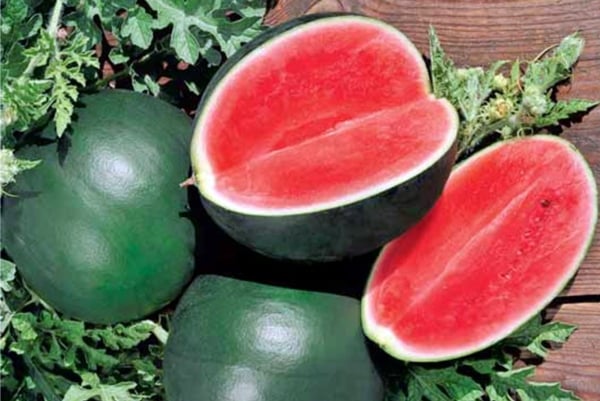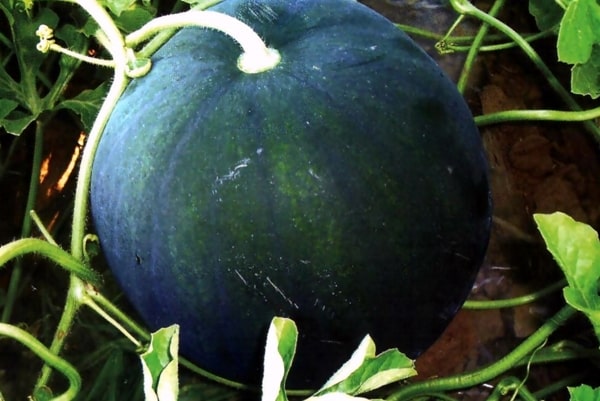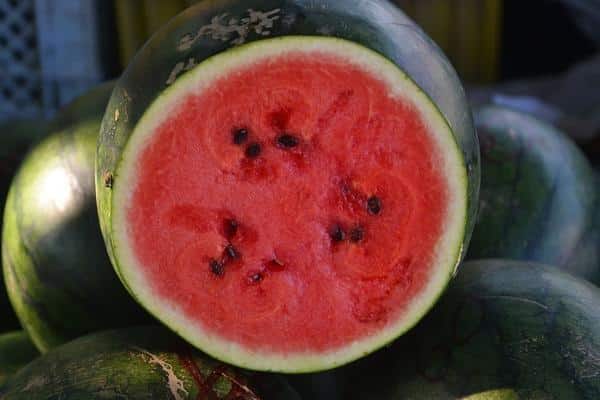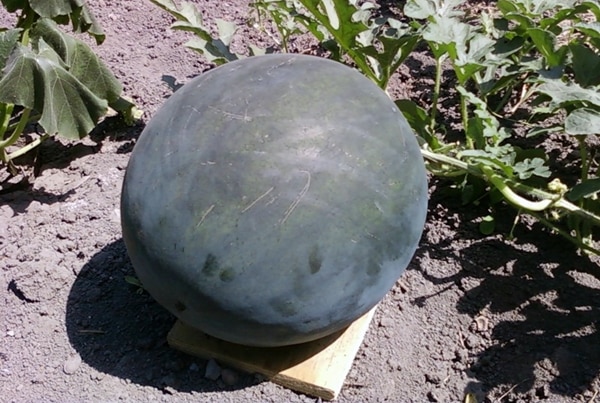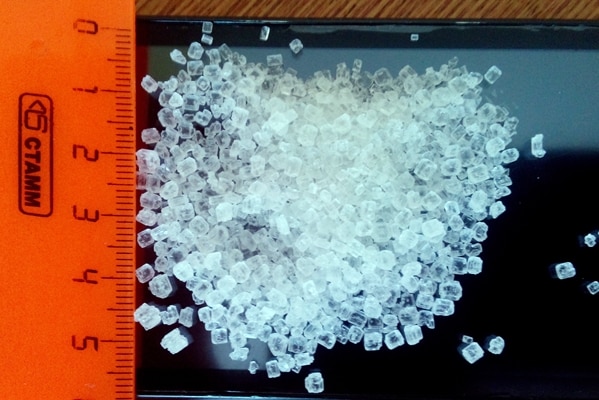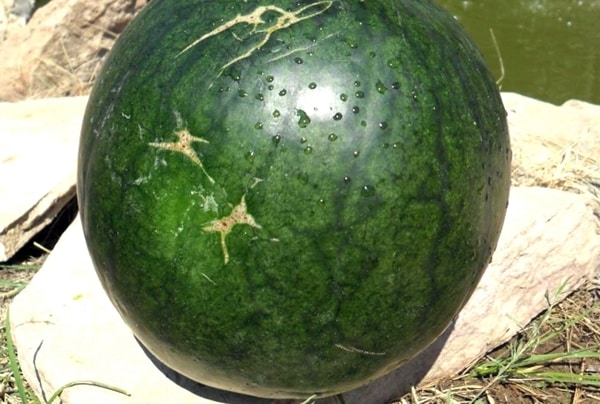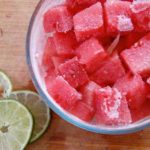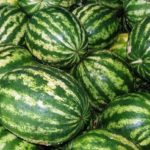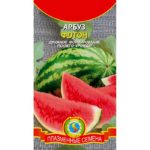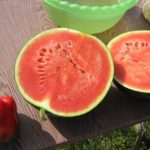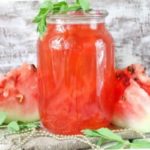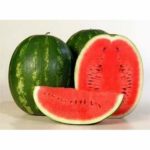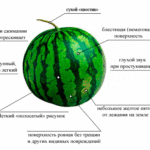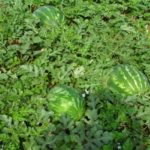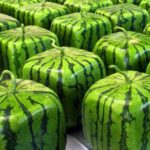The Ogonek variety of watermelon was bred back in the 60s, but remains in demand by gardeners today. This is not surprising, since for an early variety it contains an abundance of sugars and contains sweet, tender pulp. Ogonyok also distinguished himself with other positive qualities, but first things first...
- Advantages and characteristics of watermelon Ogonyok
- How it was bred and the growing region
- Features of growing watermelon in different regions
- Rules for planting and growing
- In the greenhouse
- In the open ground
- Rules of care
- Watering
- Top dressing
- Formation
- How to determine the ripeness of berries
- When to Harvest
Advantages and characteristics of watermelon Ogonyok
A representative of the pumpkin family settled in central Russia.It ripens well in the Moscow region and produces crops even in difficult Siberian climatic conditions. This is due to its unpretentiousness and resistance to disease. But the variety is unsuitable for long-term transportation, so it is better to consume it immediately on the spot.
The variety received its name due to its carmine-red pulp. It is distinguished by graininess, juiciness, and sweet taste. The fruit itself is similar to a ball; it is round, smooth in shape, weighing up to 2 kg (sometimes 2.7 kg). A thin dark green peel surrounds the pulp containing small seeds. Due to the thin peel, there is a problem with transporting the fruit.
As the plant grows, lashes branching in different directions are formed. Stems and leaves have a characteristic drooping appearance. The leaves are arranged alternately and are located on long petioles. The leaf blade is entire, rigid, triangular-ovate in shape.
The description says that the variety is not only productive, it ripens earlier than many famous hybrids. This is due to its ability to withstand sudden warming and cooling, wet weather, and adapt to different climatic conditions. It stoically tolerates the lack of watering and fertilizing, and is rarely affected by Fusarium wilt and anthracnose.
The variety is characterized by the following indicators:
- early ripening: ripens in an average of 85 days;
- average berry weight up to 2 kg;
- dark, green fruit;
- yield up to 2.6 kg/m. sq.;
- ability to grow in open and closed ground.
Watermelon Ogonyok is resistant to short-term drops in temperature, although, like other melons, it loves warmth and sun. It manages to ripen in the middle zone before the onset of frost.
How it was bred and the growing region
The unpretentious watermelon was bred in our country back in Soviet times at the Institute of Vegetable Growing near Kharkov.
It is believed that Ogonyok was obtained by crossing an Asian hybrid and the Sugar variety. It was intended for cultivation in the southern regions.
Gradually its geography expanded. Ogonyok proved himself well in the Moscow region, reached the Urals and ended up in Siberia. But the cold Siberian climatic conditions did not allow melons to be grown in open ground. But the greenhouse conditions turned out to be quite suitable.
Features of growing watermelon in different regions
The concept of central Russia is quite loose. The climate in the middle zone depends on the specific region. Thus, in the Moscow region, watermelon ripens both in open ground and in greenhouse conditions. Naturally, in a greenhouse, controlled climate, the harvest can be obtained much earlier.
In the Urals, growing in open ground is a risky business. If the summer is hot, the fruits will have time to ripen, but if the season is cool and rainy, then there is no need to wait for the harvest. Therefore, without risk, you can grow Ogonyok only indoors.
Siberian conditions require exclusively greenhouse cultivation of the variety. This is a zone of risky farming, where getting a harvest of southern crops “in the open air” is problematic. In the southern regions, Ogonyok ripens without any problems or hassle. Here vegetable growers receive early harvests.
Rules for planting and growing
In mid-latitudes, the Ogonyok variety is planted using seedlings:
- The seeds are sown in peat tablets or plastic cups to a depth of 3-4 cm, since the seeds are large.
- When seedlings emerge, a 12-hour daylight period is important so that the seedlings do not stretch.
- The seedlings must get stronger, so they need regular watering and fertilizing.
- When the third true leaf appears, it is ready for planting in the ground (greenhouse). When planting “outdoors,” it is necessary to harden off so that the southern plant gets used to cool, continental conditions.
Before planting, the seeds are tested in a saline solution, and non-viable specimens float to the surface. It is also advisable to soak them for half an hour in a weak solution of potassium permanganate for disinfection.
In the greenhouse
Indoors are ideal conditions for growing southern crops. There are no temperature changes, rain, or high humidity. The conditions that watermelons require are created. If an early harvest is planned, then the seedling method will be preferable. Although already in April you can sow seeds in a greenhouse created in a greenhouse.
The planting pattern is 60×70, since the vines will be tied to a trellis to save space. You can plant seedlings as early as the beginning of May, by which time the greenhouse will have warmed up well.
In the open ground
It is possible to grow melons and melons in open ground only through seedlings (we are talking about the middle zone). Planting time is the last week of May - the first week of June. Plants are grown according to the following scheme: 60x140 cm. That is, the distance between the bushes is 60 cm, between the rows - 140 cm. The watermelon throws out lashes, so this placement is justified.
Watermelon is planted in loose, well-permeable soil, without stagnant moisture, because melons are drought-resistant. An open, level, slightly elevated place is suitable. The area for melons should be large: pumpkin plants are not small crops.
If the night temperature drops below +15 C, then the growth of the watermelon stops. If there is a threat of return frosts, watermelon seedlings need shelter, especially if the hardening stage has not been completed.
Rules of care
The basic maintenance requirements are traditional: loosening, weed removal, watering, fertilizing. For melons and melons, it is important to form vines and place them on a trellis. This technique must be mastered in order to get a full harvest. Otherwise, the Ogonyok variety can be grown by a vegetable grower without experience, since its care is minimal.
Watering
Although watermelons are classified as drought-resistant crops, the comfortable soil moisture level for them is 85%. Therefore, on sandy soils, frequent watering is carried out, and on chernozem or clayey soils, melons are watered less frequently.
Watering is carried out with warm, settled water in the evening, and the water should not get on the leaves or under the roots. In greenhouses, the frequency of watering is regulated and carried out as the soil layer dries out. In open ground, everything depends on the “rainy season”. With heavy summer rainfall, no watering is required at all. When the fruits are ripe, Ogonyok does not need moisture.
Top dressing
During the growing season, watermelon needs three feedings. Each plant should receive 2 liters of fertilizer. Power sequence:
- 10 days after planting young plants, the first feeding is carried out. It consists of 45 g of superphosphate, 30 g of ammonium sulfate, 15 g of potassium salts. The mixture is diluted in a bucket of warm water.
- During the period of active growth and formation of ovaries, phosphorus-potassium fertilizers are applied, but in a different ratio: 20 g of ammonium sulfate, 10 g of superphosphate, 35 g of potassium salts per bucket of water.
- 10 days after the last application, a third feeding with a similar composition is carried out.
There are also organic fertilizers that are safer, but no less effective. Nettle infusion is useful for watermelons. They collect nettles, add some water and wait about 3 days until the fermentation process begins. The composition is diluted with water 1:1 and the holes are watered. 2-3 liters of nutrient solution is enough for one plant.
Formation
The most convenient way to grow is on a net or trellis. So, the leaves receive maximum light and do not become dirty. After the fruits are formed, they are placed in nets so that the vine does not break and, in a suspended state, they do not come into contact with the ground and do not rot.
During growth, the side canes are removed and one remains, on which fruits are formed. After flowering, 3-4 ovaries are left, the rest are removed. Without this procedure, the Ogonyok watermelon will ripen, but its fruits will be smaller. When it is clear that the fruits have begun to grow, pinch the apical shoot, since its further growth is not needed.
Since Ogonyok is well pollinated by bees, to attract them you can grow honey plants nearby or sprinkle the melon with sugar (honey) solution.
How to determine the ripeness of berries
Fruit ripening of the watermelon variety Ogonyok is uniform. To determine ripeness, experienced vegetable growers use external inspection:
- the size of the watermelon must correspond to its varietal characteristics; it is better to choose a medium-sized fruit;
- characteristic dark green color of the fruit;
- formation of a hard crust with a dry “tail”;
- resonant sound when tapped due to voids inside;
- the presence of a side light spot when a watermelon ripens on the ground.
If the fruit is thrown into water and it floats up, it means that the watermelon is ready to eat and its ripeness is beyond doubt.
When to Harvest
The ripening time of fruits differs and depends on the region and time of planting. In the Moscow region, the harvest can be harvested already in July, in the Urals - in August, in Siberia before the first frost in September.
The deadline for harvesting fruits in the greenhouse will come 2 weeks earlier due to early planting, higher temperatures, and the ability to create optimal conditions for growth. Greenhouse Ogonyok is characterized by juicier and tasty pulp.
Watermelons of this variety should be used immediately after harvest. They do not have high shelf life, are poorly stored and are only suitable for quick consumption. But these shortcomings are more than compensated for by the excellent taste.
Every year the market pleases with new varieties of watermelons: square and oblong, with pulp of different colors and shades, unusually colored fruits. But the watermelon Ogonyok does not give up its position. This old, time-tested variety remains a favorite of many vegetable growers.

